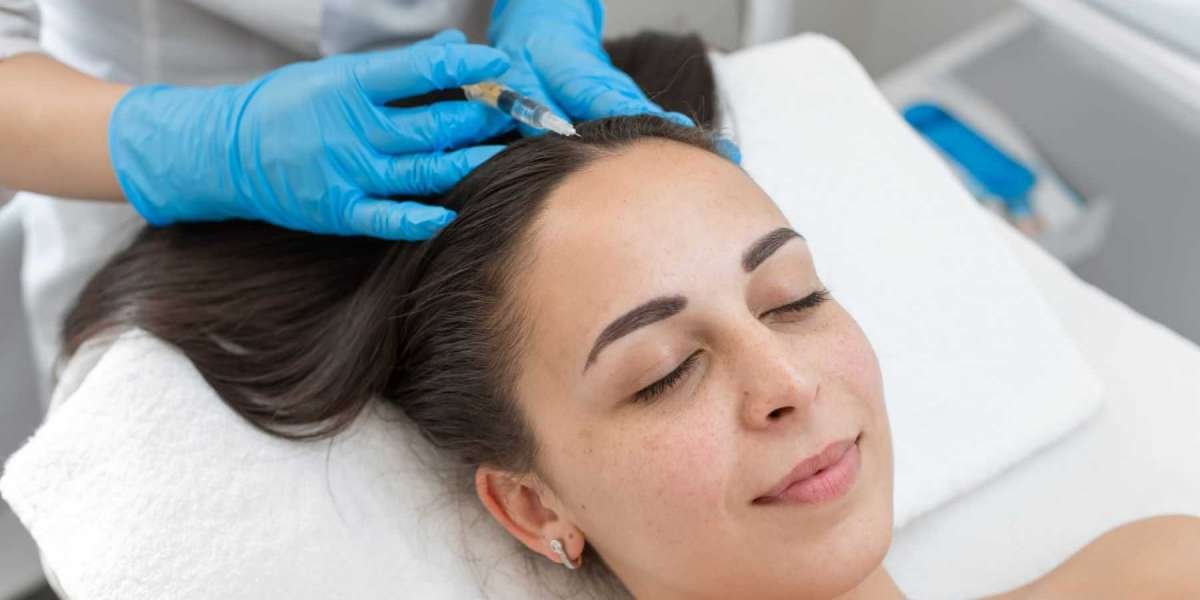Hair loss is a common concern affecting millions of people worldwide, leading to a growing interest in effective treatments. One such treatment that has garnered significant attention is Platelet-Rich Plasma (PRP) therapy.
This innovative approach uses the body's own growth factors to stimulate hair growth and improve hair density. In this article, we will explore the benefits, risks, and results of PRP hair treatment.
What is PRP Hair Treatment?
PRP hair treatment involves extracting a small amount of the patient's blood, processing it to concentrate the platelets, and injecting the platelet-rich plasma into the scalp. Platelets are rich in growth factors that play a crucial role in healing and tissue regeneration.
By injecting PRP into the scalp, the aim is to promote hair follicle health, encourage new hair growth, and enhance the thickness of existing hair.
How Does PRP Hair Treatment Work?
The process of PRP hair treatment can be broken down into several steps:
- Blood Collection: A small sample of the patient's blood is drawn, usually from the arm.
- Centrifugation: The blood sample is placed in a centrifuge, a machine that spins at high speed to separate the components of the blood. This process concentrates the platelets, creating PRP.
- Injection: The PRP is carefully injected into the areas of the scalp affected by hair thinning or loss. The growth factors in PRP help to rejuvenate the hair follicles and stimulate new hair growth.
Benefits of PRP Hair Treatment
PRP hair treatment offers several potential benefits, making it an attractive option for individuals experiencing hair loss or thinning.
Natural and Safe
Since PRP uses the patient's own blood, there is minimal risk of allergic reactions or adverse effects. This makes it a safe and natural treatment option.
Promotes Hair Growth
The growth factors in PRP can stimulate the hair follicles, encouraging the growth of new hair and enhancing the thickness of existing hair. Many patients notice improved hair density and reduced hair shedding after undergoing PRP therapy.
Non-Surgical Procedure
PRP hair treatment is a minimally invasive procedure that does not require surgery. This means there is no downtime, and patients can resume their normal activities shortly after the treatment.
Quick and Convenient
The entire PRP hair treatment process typically takes about 60 to 90 minutes, making it a convenient option for individuals with busy schedules. Multiple sessions are usually recommended for optimal results.
Risks and Side Effects of PRP Hair Treatment
While PRP hair treatment is generally considered safe, it is important to be aware of potential risks and side effects.
Mild Discomfort
Some patients may experience mild discomfort or pain during the blood draw and injection process. However, this is usually temporary and can be managed with topical numbing agents or pain relievers.
Swelling and Redness
After the injections, it is common to experience some swelling and redness at the injection sites. These side effects typically subside within a few days.
Infection
Although rare, there is a slight risk of infection at the injection sites. To minimize this risk, it is crucial to ensure that the procedure is performed by a qualified and experienced medical professional in a sterile environment.
No Guaranteed Results
While many patients experience positive outcomes, PRP hair treatment does not guarantee results for everyone. The effectiveness of the treatment can vary depending on factors such as the individual's age, the extent of hair loss, and the underlying cause of hair thinning.
What to Expect from PRP Hair Treatment
Patients considering PRP hair treatment should have realistic expectations about the potential results. While PRP can stimulate hair growth and improve hair density, it is not a miracle cure for hair loss.
Initial Consultation
During the initial consultation, the medical professional will evaluate the patient's scalp, discuss their medical history, and determine if PRP is a suitable treatment option. The number of sessions required and the expected outcomes will also be discussed.
Treatment Sessions
PRP hair treatment usually involves multiple sessions spaced several weeks apart. Most patients undergo three to four sessions initially, followed by maintenance treatments every few months to sustain the results.
Results Timeline
Results from PRP hair treatment are not immediate and typically become noticeable within three to six months after the initial session. Patients may observe reduced hair shedding, increased hair growth, and improved hair thickness over time.
Result
PRP hair treatment is a promising option for individuals seeking to address hair loss and thinning. With its natural approach, minimal risks, and potential for promoting hair growth, PRP has become a popular choice in the realm of hair restoration.
However, it is important to consult with a qualified medical professional to determine if PRP is the right treatment for your specific needs and to set realistic expectations about the results.














